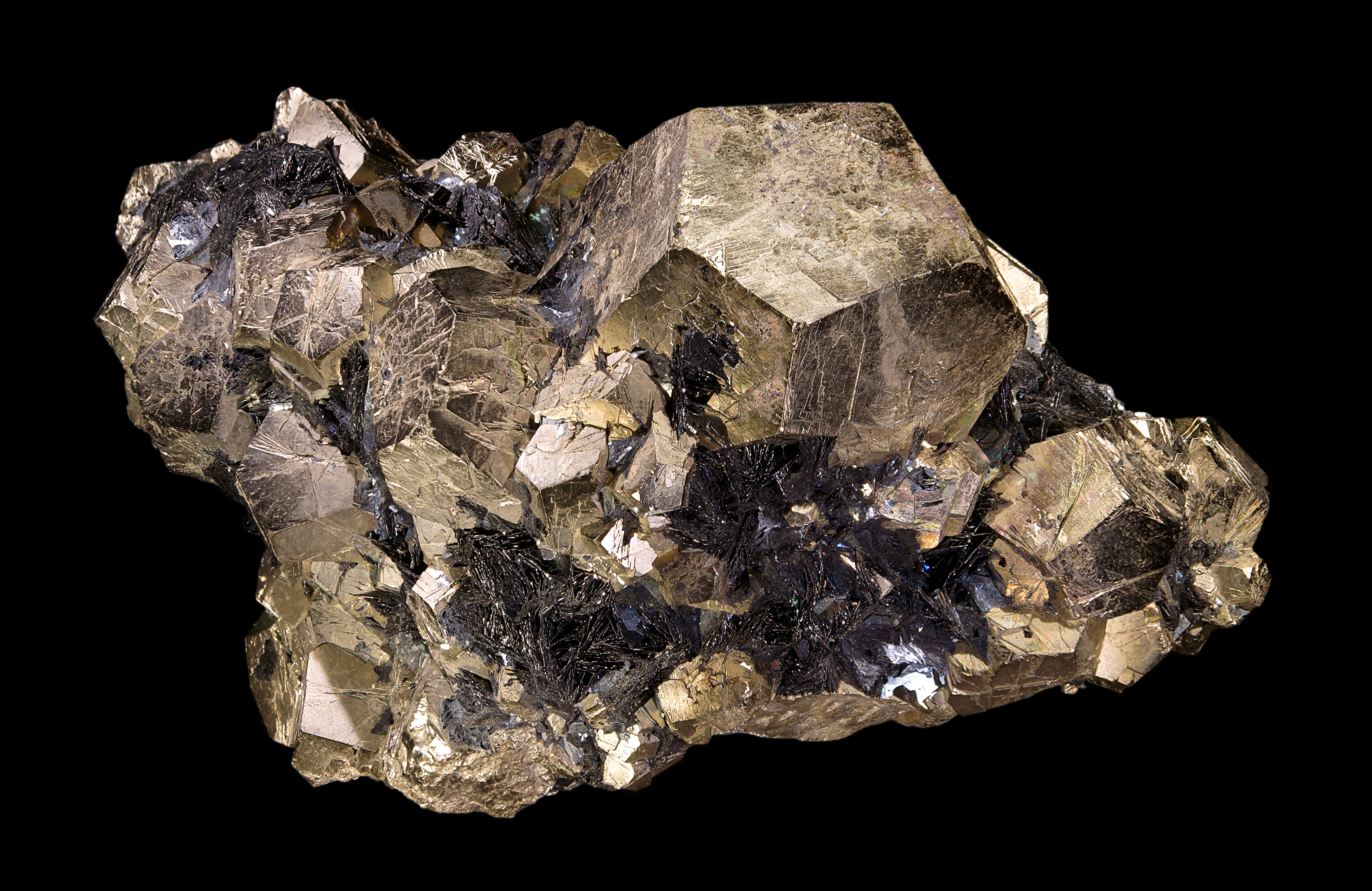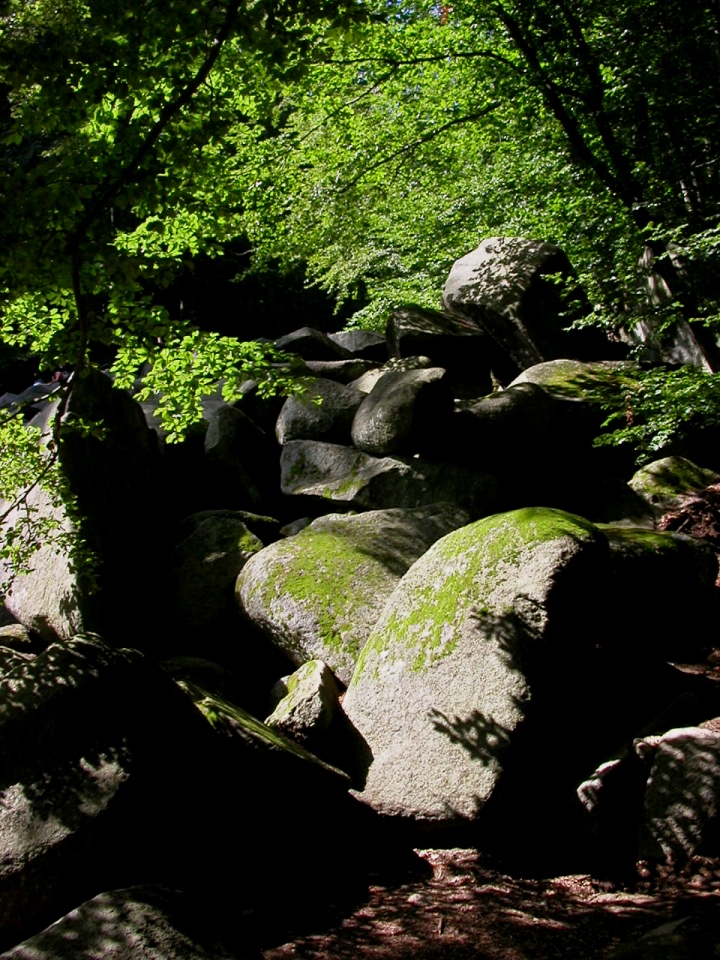|
Lautite
Lautite is a rare mineral belonging to the class of sulfides and sulfosalts with the general formula CuAsS. It is orthorhombic and is known to form up to 2.3 cm long prismatic or flat crystals. It is also found as grains or masses. First identified by Friedrich August Frenzel in 1880 in the Rudolphschacht mine near Lauta in Saxony, it was named after its type locality.Frenzel, A. (1880). XIX. Mineralogisches. Zeitschrift für Kristallographie, Mineralogie und Petrographie, 3(6), 504-516. Lautite is formed in veins under hydrothermal conditions at medium temperatures. Depending on the locality it is found accompanied by arsenic, tennantite, proustite, chalcopyrite, galenite, and baryte (in the type locality); by kutinaite and paxite (in Nieder-Beerbach); or by arsenic, bismuth, tennantite, loellingite, rammelsbergite, proustite, and quartz (in Sainte-Marie-aux-Mines). Aside from the type locality, the mineral is found in other places in the Ore Mountains, in S ... [...More Info...] [...Related Items...] OR: [Wikipedia] [Google] [Baidu] |
Sulfide Minerals
The sulfide minerals are a class of minerals containing sulfide (S2−) or disulfide (S22−) as the major anion. Some sulfide minerals are economically important as metal ores. The sulfide class also includes the selenides, the tellurides, the arsenides, the antimonides, the bismuthinides, the sulfarsenides and the sulfosalts.http://www.minerals.net/mineral/sort-met.hod/group/sulfgrp.htm Minerals.net Dana Classification, SulfidesKlein, Cornelis and Cornelius S. Hurlbut, Jr., 1986, ''Manual of Mineralogy'', Wiley, 20th ed., pp 269-293 Sulfide minerals are inorganic compounds. Minerals Common or important examples include: * Acanthite * Chalcocite * Bornite *Galena *Sphalerite *Chalcopyrite *Pyrrhotite * Millerite *Pentlandite * Covellite *Cinnabar * Realgar *Orpiment * Stibnite *Pyrite *Marcasite * Molybdenite Sulfarsenides: * Cobaltite *Arsenopyrite * Gersdorffite Sulfosalts: * Pyrargyrite *Proustite *Tetrahedrite * Tennantite * Enargite * ... [...More Info...] [...Related Items...] OR: [Wikipedia] [Google] [Baidu] |
Friedrich August Frenzel
Friedrich August Frenzel (24 May 1842 – 27 August 1902) was a German mineralogist. He was born in a miner's family in Freiberg, Saxony. In 1861 he was awarded a scholarship which enabled him to study mineralogy at Bergakademie Freiberg. There he attracted the attention of August Breithaupt who asked him to help with organising the mineralogical collections of the academy and with testing mineral samples, and to assist in the professor's mineralogical research. In 1865 Frenzel finished his studies and was awarded the title of a mining inspector. From then on, he worked for 25 years as a chemist in the metallurgical laboratories. He also lectured at the Bergakademie. One of his best known works is the mineralogical encyclopedia for the Kingdom of Saxony (''Mineralogisches Lexicon Für Das Königreich Sachsen''), which contains descriptions of 723 minerals found in Saxony, information on their physical properties and chemical compositions, and descriptions of the corresponding locali ... [...More Info...] [...Related Items...] OR: [Wikipedia] [Google] [Baidu] |
Lauta (Marienberg)
Lauta is a village in the Saxon town of Marienberg in the German district of Erzgebirgskreis. Geography Lauta lies about 2 kilometres northwest of Marienberg in the Ore Mountains. Southwest of Lauta lies the high Dreibrüderhöhe, southeast of the village is the high Lautaer Höhe.Until the opening of the Marienberg ring road in 2007 the B 174 federal road from Chemnitz to Reitzenhain passed through the village. Since then it has run past Lauta to the north and east. There is a road to Lauterbach, the ''Kreisstraße'' 8131. History Lauta was first mentioned in 1434 as ''die Lute''. Mining started in 1523 with ''Bauernzeche'' pit on the ore vein '' Bauer Morgengang''. Following the Protestant Reformation Lauta became part of Lauterbach parish in 1539, and on 1 October 1875 it became part of Marienberg parish. By way of reciprocation, some mine buildings near Rittersberg and two mine buildings which used to belong to Niederlauterstein, together with 27 inhabita ... [...More Info...] [...Related Items...] OR: [Wikipedia] [Google] [Baidu] |
Schenkenzell
Schenkenzell is a village in the district of Rottweil, in Baden-Württemberg, Germany. The town is twinned with Schenkon Schenkon is a municipality in the district of Sursee in the canton of Lucerne in Switzerland. Geography Schenkon has an area of . Of this area, 67.8% is used for agricultural purposes, while 17% is forested. Of the rest of the land, 14.8% is s ... in Switzerland. References External links Schenkenzell pictures Rottweil (district) {{Rottweil-geo-stub ... [...More Info...] [...Related Items...] OR: [Wikipedia] [Google] [Baidu] |
Hausach
Hausach (; gsw, label= Low Alemannic, Huusä) is a town in the Ortenaukreis, in western Baden-Württemberg, Germany. History Hausach was founded in the 13th century, below Husen Castle. In the 14th century, it became a possession of the County of Fürstenberg, who gave the town its charter and maintained a residence in it. In 1806, Hausach was mediatized to the Grand Duchy of Baden. The town was assigned in 1813 to the district of Haslach, but in 1857 was reassigned to the district of Wolfach. In 1939, that district was reorganized as . On 1 Jul 1971, the town of Einbach was incorporated into Hausach. As a result of the , Hausach was assigned to the Ortenau district. Geography The township (''Stadt'') of Hausach is part of the Ortenau district of Baden-Württemberg, in the Federal Republic of Germany. It is physically located in the Central Black Forest, at the center of the valley of the Kinzig. the elevation above sea level in the municipal area ranges from a high of ... [...More Info...] [...Related Items...] OR: [Wikipedia] [Google] [Baidu] |
Odenwald The Odenwald () is a low mountain range in the German states of Hesse, Bavaria and Baden-Württemberg. Location The Odenwald is located between the Upper Rhine Plain with the Bergstraße and the ''Hessisches Ried'' (the northeastern section of the Rhine rift) to the west, the Main and the Bauland (a mostly unwooded area with good soils) to the east, the Hanau-Seligenstadt Basin – a subbasin of the Upper Rhine Rift Valley in the Rhine-Main Lowlands – to the north and the Kraichgau to the south. The part south of the Neckar valley is sometimes called the '' Kleiner Odenwald'' ("Little Odenwald"). The northern and western Odenwald belong to southern Hesse, with the south stretching into Baden. In the northeast, a small part lies in Lower Franconia in Bavaria. Geology The Odenwald, along with other parts of the Central German Uplands, belongs to the Variscan, which more than 300 million years ago in the Carboniferous period ran through great parts of Europe. ... [...More Info...] [...Related Items...] OR: [Wikipedia] [Google] & |

.jpg)
